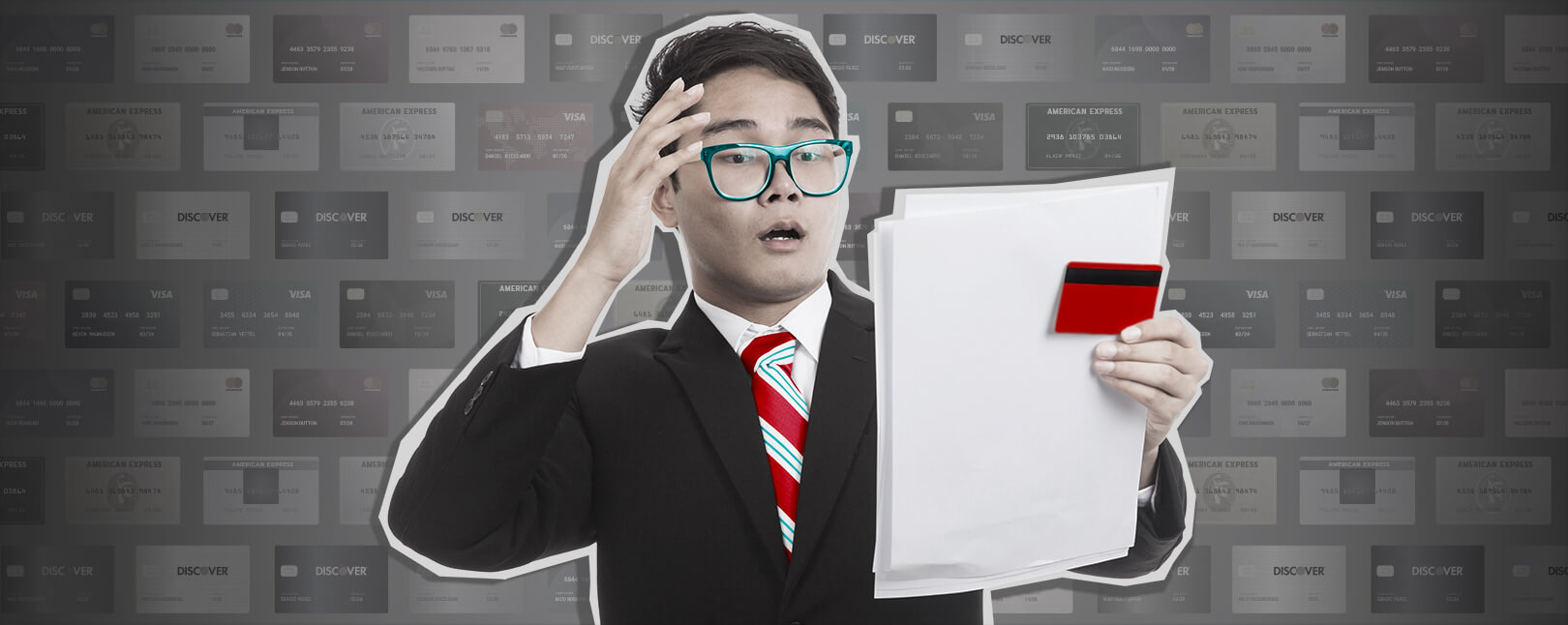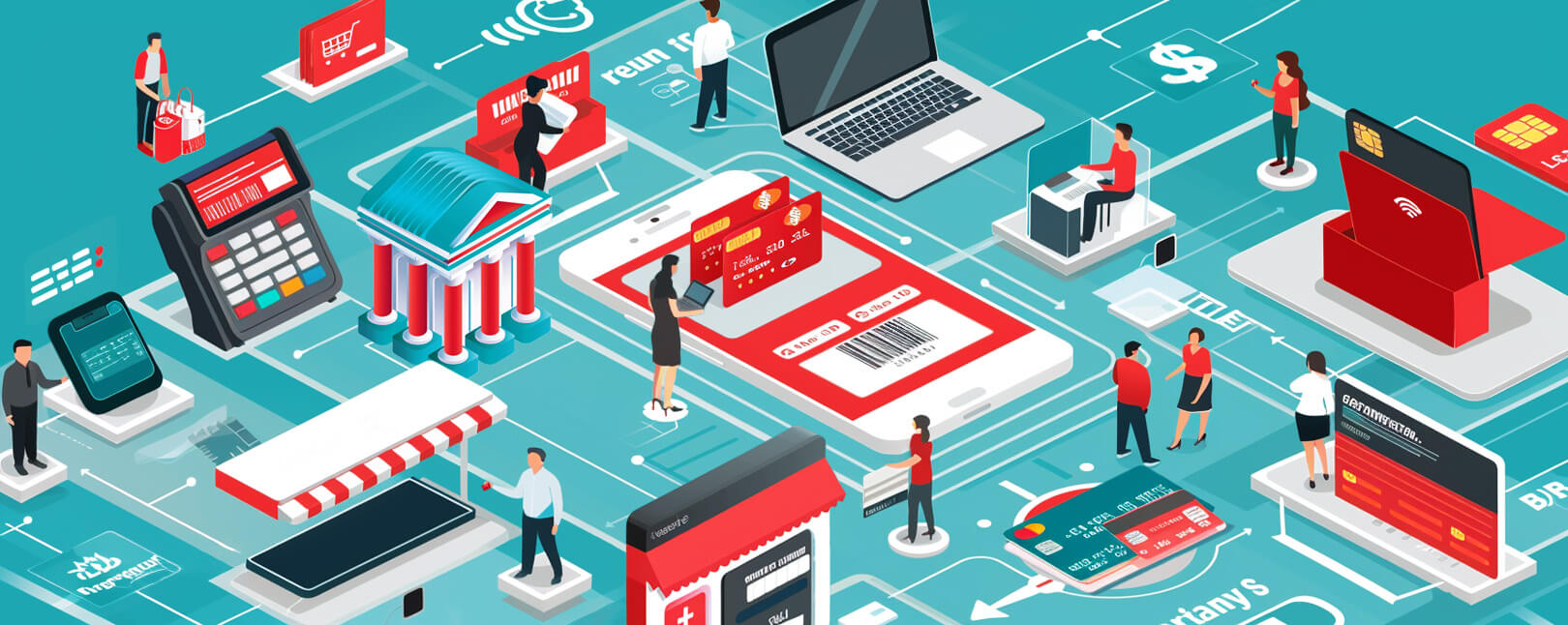What Happens When You Dispute a Transaction? Here's a Step-by-Step Guide Explaining How to Dispute a Charge...and When You Shouldn't Do it.
We’ve all made the occasional online purchase that didn’t quite live up to our expectations.
It’s a remarkably common thing. After all, when we can’t touch, hold, or measure the things we’re shopping for, it’s hard to get a feel for what you’re really buying. More often than not, consumers rely on detailed product descriptions and photographs to make their selections. But, as you may have guessed, that can sometimes spell trouble.
What do you do when the items you purchase differ significantly from the description you were given? What if your goods arrive broken? Or, if they never arrive at all? Even worse, what if you never even authorized the purchase to begin with?
Any of these issues may give you a valid reason to open a transaction dispute. You may not be sure what that is or how it works, though. So, let’s go over it together and see if we can get a better idea of what happens when you dispute a transaction.
Recommended reading
- A Step-By-Step Guide to the Chargeback Process in 2024
- Provisional Credits: Here’s Everything You Need to Know.
- Here are the 5 Valid Reasons to Dispute a Charge
- Chargeback Costs: The Shocking Truth in 2024
- Debit Card Chargebacks: Everything You Need to Know in 2024
- 14 Chargeback Facts Exposing the Threat of Fraud in 2024
What is a Transaction Dispute?
A transaction dispute, commonly known as a “chargeback,” occurs when a customer files a formal complaint against a recent purchase.
The most common reasons why cardholders file disputes are unauthorized purchases (i.e. fraud), services not rendered, or items not received. Transactions may also be disputed in cases of merchant mismanagement or in response to an unfair return policy.
During a transaction dispute, the funds from the original transaction may be forcibly removed from the merchant’s account and returned to the cardholder. To do this, the cardholder must first demonstrate that they attempted to resolve the issue with the merchant before filing the dispute. The aim here is to verify that the charge was fraudulent. Check out our article here explaining how to do this, step by step.
Specific examples of chargeback-worthy claims include:
- Fraud or unauthorized charges on the account.
- Orders that were never delivered.
- Your merchandise arrived damaged or defective.
- Items/services that do not reflect what you purchased.
- The seller overcharged you for a purchase.
Disputes Vs. Chargebacks: What’s the Difference?
One thing you might find confusing is the terminology regarding transaction disputes. We should talk about that real quick before we discuss the specifics of what happens when you dispute a transaction.
The terms “chargeback” and “dispute” can refer to the same process, in a general sense. There’s one key distinction, though: all chargebacks can be considered transaction disputes, but not all disputes are chargebacks.
Disputes
A dispute is a situation in which you contact the bank and make the claim that a transaction should be reversed.
Chargebacks
A chargeback happens when the bank actually advances the dispute claim and reverses the transaction.
This gets confusing, though, because each of the card brands has its own set of rules regarding processes and terminology. Visa, for instance, no longer uses the term “chargeback” at all; for this network, there’s no distinction between a dispute and a chargeback. It’s good to understand the difference, but it’s okay if you find yourself using the two terms interchangeably. Most people do.
What Happens When You Dispute a Transaction: 5 Stages in the Dispute Process
Once filed, your dispute is then turned over to the bank or card network for investigation. Your bank will typically give you a provisional refund, which will be in place until your claim can be validated by the bank.
That process goes as follows:
Stage #1 | Initial Dispute
The transaction dispute process begins when you contact your issuing bank (i.e. the bank that issued the credit or debit card used for the purchase). Each transaction presents a separate potential chargeback. So, multiple disputes may be filed if more than one transaction is in question.
Your issuer can sometimes initiate disputes on your behalf without contacting you first. This is referred to as a bank chargeback, and is a less-common occurrence. You won’t tend to run into this unless the bank notices a suspicious, or otherwise problematic transaction before you do.
Stage #2 | The Provisional Refund
The bank issues a conditional refund to you. This conditional refund is meant to help you cover potential hardships you might experience due to the funds in question being missing from your account.
The issuer pays this refund from their own reserves, then recoups the money from the merchant’s acquiring bank. The acquirer will then debit the original transaction amount, along with any applicable fees, from the merchant’s account.
Stage #3 | Transmitting the Chargeback
At this stage of the dispute process, the issuing bank assigns a numeric reason code for the dispute, then transmits all the chargeback information to the merchant’s acquirer. The acquirer will review the data, then forward it to their merchant for review.
Keep in mind that this stage is intended to provide the merchant with the opportunity to verify or deny the claims you’ve made. If the merchant can’t provide evidence that your claim is invalid or incorrect in some way, then the dispute ends here. If they can provide evidence, however, the dispute may proceed to the next stage.
Stage #4 | The Option to Re-Present
The merchant has the option to accept the chargeback or fight it if they think your claim is invalid. Fighting a chargeback requires specific documentation in compliance with representment requirements. This may include a copy of the return policy, a signed receipt from delivery, or one of dozens of other documents.
The merchant has to compile and submit this evidence to their acquiring bank. The bank then reviews it and decides whether or not to submit the package to your issuing bank. This is a process known as representment; the seller is literally “re-presenting” the transaction to the bank for approval.
Stage #5 | Final Review & Decisioning
Your issuing bank then reviews the information. At this point, one of three things will happen:
Merchants: confused about the chargeback process? We can make it simple.

The final stage in this process, called arbitration, only occurs if the merchant refuses to let the dispute go. During arbitration, the merchant will again argue that the original dispute is invalid, at which point the card brand (Visa, Mastercard, etc.) will get involved as an arbitrator. If the card network decides in the merchant’s favor, the funds from the original transaction will again be removed from your account, minus any fees that may apply.
Arbitration is a very costly and time-consuming process for merchants and banks. As a result, fewer than 2% of cases escalate to this point. Unless the item in question is expensive to make and produce, most disputes are resolved before or after the representment stage.
Transaction Dispute Time Limits
Chargeback deadlines are pretty generous on the consumer side.
Specific chargeback time limits will vary based on the reason code attached to the claim. That said, you typically have up to 120 days after the original transaction or expected delivery date in which to file a dispute.
There are a few exceptions to this rule that you should know about, though. For example, a Chase Bank cardholder will only have 60 days to dispute a transaction, despite the network’s limit being 120 days. Likewise, while Visa says that merchants have a 45-day response window, the Chase credit card chargeback time limit for merchants is just 39 days.
On the other hand, PayPal—which can serve as a credit card processor for merchants—allows buyers up to 180 days to file a claim. That’s 50% more time than what the major card networks allow. The merchant, however, must respond within seven days.
Generally speaking, if you have a legitimate reason to file a dispute against a merchant, you should do so as soon as possible. Depending on the circumstances and on what happens when you dispute a transaction, a chargeback could take weeks—or even months—to resolve. You should get the ball rolling sooner rather than later.
When Shouldn’t You Dispute a Transaction?
So, now you know the basics of what happens when you dispute a transaction, and also a little about how to dispute a transaction. Now, we'll discuss when you shouldn't do it.
The chargeback process exists to protect you against fraud and merchant abuse. But, in most cases, you should try seeking a refund directly from a merchant before contacting the bank.
Disputes and refunds are not the same thing. The two processes do not achieve the same ends, and a dispute may not always work out in your favor. Not only do refunds tend to get resolved faster, there’s also the real possibility that your chargeback claim might get rejected by the bank.
Seeking a refund directly from the source is a much faster, guaranteed way to get what you want without additional hassles. The same is not true for disputed transactions. That’s why it’s best to work things out with the seller whenever possible.
To illustrate, here are a few scenarios in which you should not request a chargeback without contacting the merchant first:
- You forgot about a purchase on your statement, but believe that it might have been authorized.
- You forgot about a recurring payment, like a subscription.
- You signed up for a free trial, but weren’t able to cancel before being charged for the service.
- You misunderstood the delivery date or a component of the merchant’s refund policy.
- You believe a chargeback is the same thing as a refund.
- You believe filing a dispute will be easier or more convenient than requesting a refund.
- You allowed a family member, like a spouse or a child, to use your credit card or account information.
Requesting a chargeback in any of these situations, without at least contacting the merchant beforehand, would be a violation of chargeback rules. It’s a practice known as first-party fraud (commonly referred to as “friendly fraud”).
If the seller can provide evidence that validates the transaction through representment, you will lose those funds all over again. If that happens, you could be charged fees and penalties by your bank. Depending on the severity of the situation, you could even lose your account privileges, which would negatively affect your credit score.
Make Sure You Understand What Happens When You Dispute a Transaction
The most important thing to remember about transaction disputes is that you aren’t necessarily resolving your problem by filing a dispute.
Opening a dispute places the funds from that transaction in a limbo that could last months. This is true, whether you receive a provisional refund or not. If you refer to the dispute stages above, that refund could be taken away as quickly as it was returned.
The fastest, easiest way to get your money back is to deal with the merchant whenever possible. Nowadays, many merchants encourage you to reach out with any issues immediately. This makes it extremely simple to file and receive refunds online.
Look at the Amazon refund process, for example. All you have to do is log into the app, select a reason, and then drop the item off at one of thousands of easy-to-find return locations. Simple.
Of course, there will still be situations when you have a valid concern, and can’t resolve the issue with the merchant. When that happens, you’re well-within your rights to file a dispute in such cases.
FAQs
What happens when you dispute a transaction?
When you file a transaction dispute, the funds from the original transaction may be forcibly removed from the merchant’s account and returned to you. To receive those funds, you must first demonstrate that you attempted to resolve the issue with the merchant before filing the dispute. The aim here is to verify that the charge was erroneous or fraudulent. If the merchant files a counter dispute (called representment) and wins, the credit will be removed from your account.
Who pays when you dispute a charge?
Your issuing bank will cover the cost initially by providing you with a provisional credit for the original transaction amount. After filing the dispute, though, they will immediately recover those funds (plus fees) from the merchant’s account. Remember, you are only entitled to a provisional credit if you can prove that the merchant is in error or the charge is illegitimate.
Is disputing a transaction bad?
Not inherently, no. As a cardholder, you have a right to dispute a charge resulting from criminal fraud, or if the merchant committed an error. However, you should contact the merchant first before disputing the charge. If you accidentally dispute a valid charge, that would be a case of first-party fraud, commonly known as “friendly fraud.”
How long does it take to get your money back after dispute?
A provisional credit should take 2-3 days to process. However, it may take weeks, or even months, before a dispute is finally settled. This will depend on whether the merchant decides to fight the dispute, and if they later escalate it to arbitration.
Can a bank deny a dispute? What happens if a credit dispute is denied?
Yes. A bank can reject a dispute if there's insufficient evidence, or if the merchant provides their own evidence that contradicts it. In this case, you would lose the funds from the original transaction and may also get hit with a fee, depending on the bank's rules.












